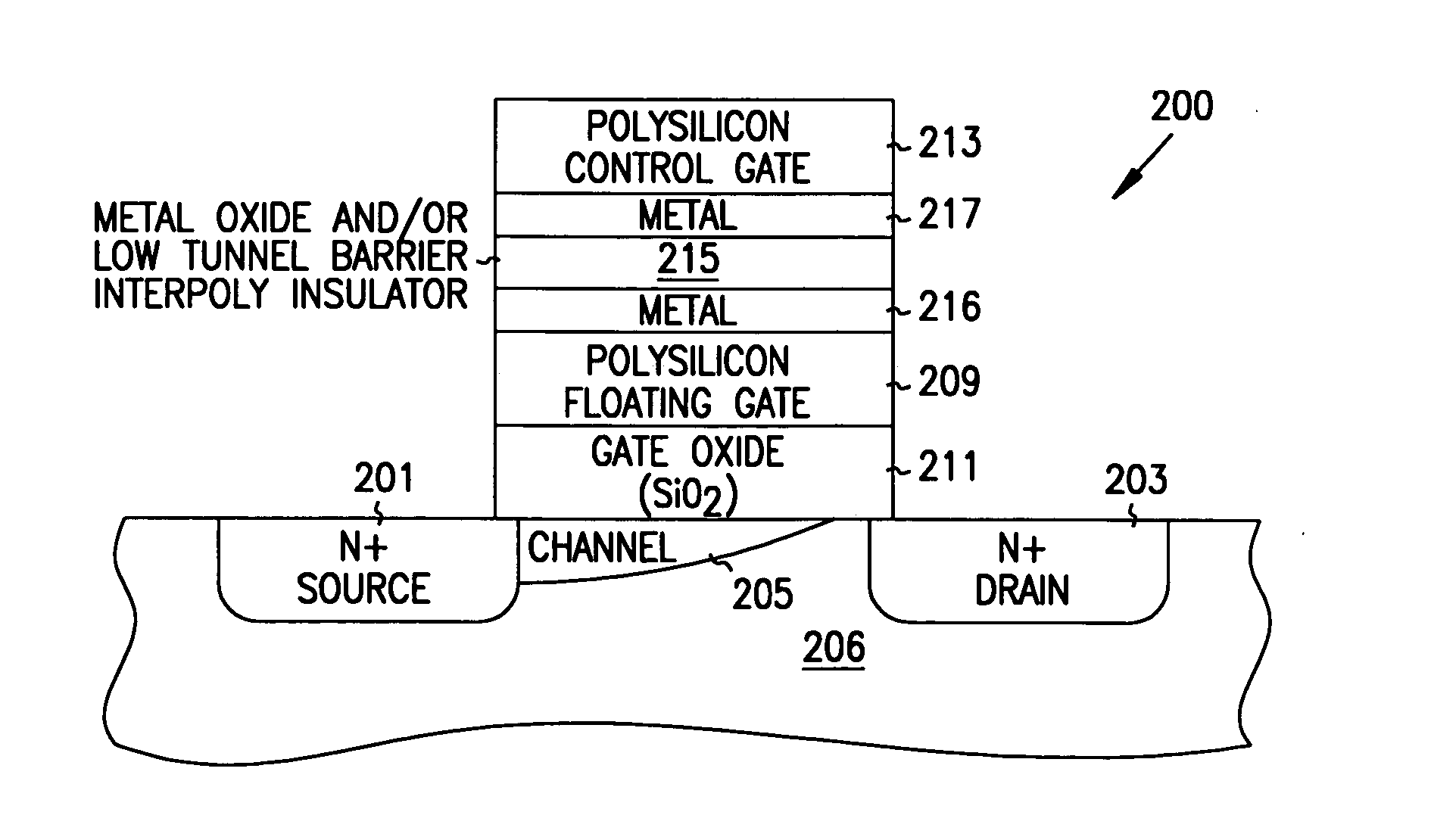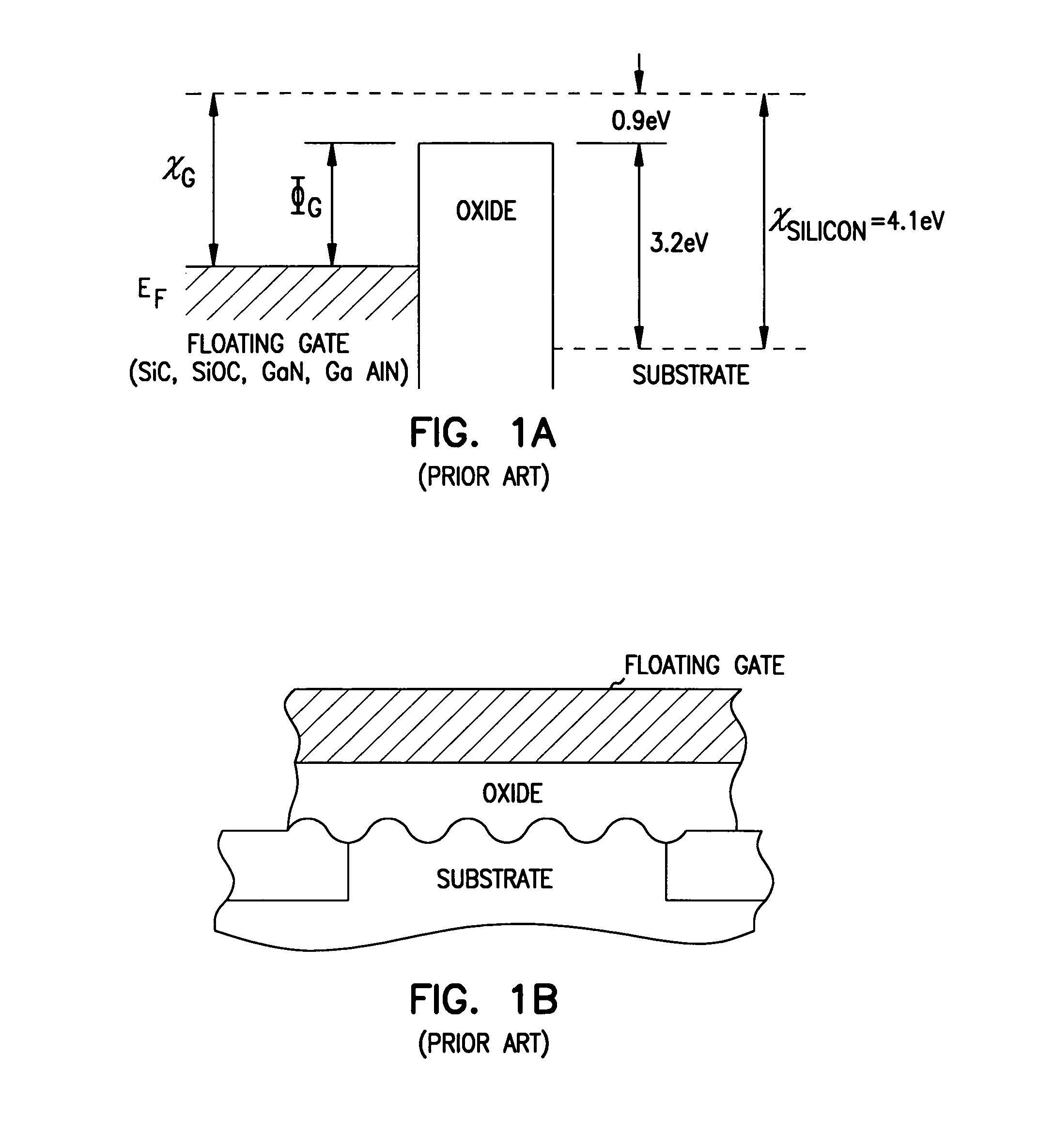Atomic layer deposition of metal oxide and/or low asymmetrical tunnel barrier interpoly insulators
a tunnel barrier and metal oxide technology, applied in the field of integrated circuits, can solve the problems of premature breakdown and reliability problems, poor quality of interpoly oxides, and localized high electric fields
- Summary
- Abstract
- Description
- Claims
- Application Information
AI Technical Summary
Benefits of technology
Problems solved by technology
Method used
Image
Examples
example i
Formation of Al / Al2O3 / Al tunnel barriers can be built having a barrier height of about ˜2 eV. FIG. 8 graphically illustrates the dependence of the barrier height for current injection on the work function and electron affinity of a given, homogeneous dielectric film. FIG. 9 is a table which provides relevant data on the barrier heights, energy gaps, dielectric constants and electron affinities of a wide variety of metal oxides that could be used as asymmetric tunnel barriers according to the teachings of the present invention. (See generally, H. F. Luan et al., “High quality Ta2O5 gate dielectrics with Tox equil. 10 Angstroms,” IEDM Tech. Digest, pp. 141-144, 1999; J. Robertson et al., “Schottky barrier heights of tantalum oxide, barium strontium titanate, lead titanate and strontium bismuth tantalate,” App. Phys. Lett., Vol. 74, No. 8, pp. 1168-1170, February 1999; J. Robertson, “Band offsets of wide-band-gap oxides and implications for future electronic devices,” J. Vac. Sci. Tec...
example ii
Formation of Al / Ta2O5 / Al tunnel barriers can be formed with a barrier height of about 2 eV. See FIGS. 8 and 9. Again, processes for producing ultra-thin films of Ta2O5 that are suitable for tunnel barriers are known. See, for example, the work of Kim et al. (see generally, Y. S. Kim et al., “Effect of rapid thermal annealing on the structure and the electrical properties of atomic layer deposited Ta2O5 films”, Jour. Korean Phys. Soc. 37 (6), pp. 975-979 (2000)) cited above. Note that it may not be necessary to maximize the dielectric constant of this oxide for the present applications although such maximization is desirable for building useful, minimal area DRAM storage capacitors. One can fabricate these Al / Ta2O5 / Al tunnel barriers following the approach sketched out above. (i) Use a low energy, inert ion plasma in the auxiliary chamber to sputter clean residual exodies, etc. from the poly-Si surfaces previously fabricated on the device wafer. (ii) Deposit an aluminum contact la...
PUM
 Login to View More
Login to View More Abstract
Description
Claims
Application Information
 Login to View More
Login to View More - R&D
- Intellectual Property
- Life Sciences
- Materials
- Tech Scout
- Unparalleled Data Quality
- Higher Quality Content
- 60% Fewer Hallucinations
Browse by: Latest US Patents, China's latest patents, Technical Efficacy Thesaurus, Application Domain, Technology Topic, Popular Technical Reports.
© 2025 PatSnap. All rights reserved.Legal|Privacy policy|Modern Slavery Act Transparency Statement|Sitemap|About US| Contact US: help@patsnap.com



